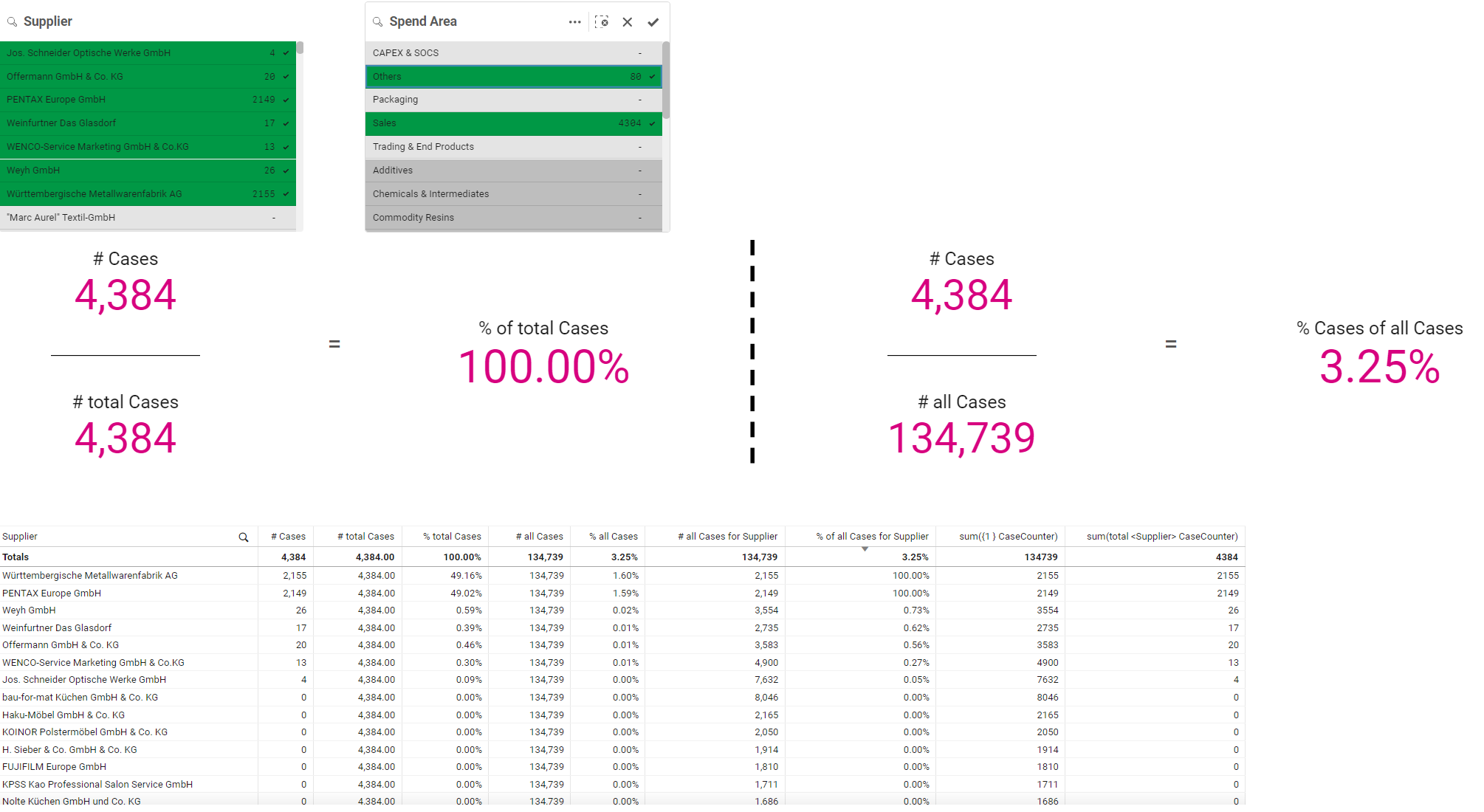|
Calculation of Shares |
Scroll Previous Topic Top Next Topic More |
mpmX supports various options for calculating relations.
A brief overview is described below, which you can use to find your ideal use case.

MasterItems Anzahl Cases Percentage Cases
Example:
mpmX was used to analyze the Purchase-to-Pay process (P2P). The case dimensions Supplier and Spend Area are stored in the purchasing process. Both have a 1:1 relationship to a case (P.O. item) and are therefore in the CaseInformation table CaseInformation_$(mv_ProcessDescription)
The end user should now be shown the relationship to all cases in a table based on filtering in Spend Area and Supplier.
KPI |
Description |
Formula |
Business Description |
# Cases |
Counts all cases (process runs). Each filtering restricts the cases displayed. In a table, the # cases are automatically calculated for the stored dimensions. |
sum(CaseCounter) |
How many cases are contained in the current filter? How many cases are there in the displayed dimensions of a table? |
# total Cases |
Counts all cases that are included in the current filtering, regardless of dimension values |
sum(TOTAL CaseCounter) |
How many cases are included in current filter? |
% total Cases |
Calculates the proportion of cases, taking into account the filtering and dimensions of a table, of all cases that are currently being filtered. |
sum(CaseCounter) /sum(TOTAL CaseCounter)
|
What percentage does the dimension value (supplier) make up of the current filter? |
# all Cases |
Counts all cases in the entire data model, regardless of filtering and dimensions. |
sum(ALL CaseCounter) |
How many cases are there in total in the data model, without any filtering? |
% all Cases |
Calculates the proportion of cases with consideration of filtering and dimensions of a table from all cases regardless of filtering and dimensions |
sum(CaseCounter) /sum(ALL CaseCounter)
|
How much does the current filtering of all cases in the data model without filtering account for? |
# all Cases for Supplier |
Calculates how many cases for the dimension in a table without taking filtering into account.
|
sum({1} CaseCounter) |
How many cases were there with the supplier without taking filtering into account? |
% all Cases for Supplier |
Calculates how many cases the current filtering makes up of all cases without filtering |
sum(CaseCounter)/ sum({1}CaseCounter) |
How much does the current filtering of all cases with the supplier account for? |
# Cases in state1 |
Calculates how many cases are filtered in another state1 |
Sum({state1} CaseCounter) |
How many cases were filtered in State 1? |
% Cases in state1 |
Calculates how much the current selection makes up of the selection in State 1 |
sum(CaseCounter)/ Sum({state1} CaseCounter) |
How much difference does my current filter make to the filtering in State 1? (previous year comparisons, benchmarks, etc.) |
In order to deepen the possibilities of pre-filtering in key figures, further analysis can be carried out here independently of the mpmX data model: